The Type 26 ‘City class’ frigate represents the future backbone of the Royal Navy and eight of the class are planned, starting with HMS Glasgow.
Admiral Sir Philip Jones, First Sea Lord said:
“The Clyde was the birthplace of some of the greatest fighting ships the world has ever known and so cutting steel there today for the future HMS Glasgow is symbolic of a Royal Navy on the rise once again.
As an island nation, we are utterly dependent on the sea for our security and prosperity and the City-class names have been chosen for the Type 26 to provide an enduring link between the Royal Navy and our great centres of commerce and industry.
The name Glasgow brings with it a string of battle honours, stretching from the Arctic Circle to the South Atlantic.”
It will be the ninth HMS Glasgow in the Royal Navy’s history, dating back to 1707.
Sir Michael told the workforce at the steel-cutting ceremony:
“Today marks a historic milestone for the Royal Navy, Scottish shipbuilding and UK defence more widely. HMS Glasgow and the other seven frigates in this class will protect our new aircraft carriers and nuclear deterrent, helping keep Britain safe across the world.”
The Type 26 Frigate programme has been underway since 1998, initially under the name ‘Future Surface Combatant’. The programme was brought forward in the 2008 budget at the expense of Type 45 destroyers 7 and 8.
Steel was cut on the 20th of July 2017 for the first in class, HMS Glasgow as part of the £3.7bn order of the first three vessels in the class. Warships of this size and complexity are ordered in batches and this approach was last seen with the Royal Navy for the Type 45 Destroyers and recent Offshore Patrol Vessels.
Defence Secretary Sir Michael Fallon said:
“The Type 26 Frigate is a cutting-edge warship, combining the expertise of the British shipbuilding industry with the excellence of the Royal Navy. We will cut steel on the first ship later this month – a hugely significant milestone that delivers on our commitment to maintain our global naval power.
These ships will be a force to be reckoned with, there to protect our powerful new carriers and helping keep British interests safe across the world.”
The vessel is believed to be 149.9m long with a beam of 20.8m, a top speed of more than 26 knots and accommodation for up to 200 people. The class is expected to have 60 days endurance and have a range of 7,000 nautical miles.
The propulsion system of the RN ships will have a gas turbine and four high speed diesel generators driving two electric motors in a ‘CODLOG’ arrangement, ‘CODLOG’ simply stands for Combined diesel-electric or gas.
In 2012 Rolls Royce redesigned the well known MT30 used in the Queen Elizabeth class aircraft carriers t enable its usage in smaller ships, such as Type 26. It is now known that the vessels will use the MT30. We learned at a RINA presentation, BAE believe that some potential customers would prefer to lose a few knots by opting to use cheaper engines. No foreign customers are forthcoming yet however.
It’s no secret that the Type 26 is designed with modularity and flexibility in mind, the latest BAE design has a large amidships mission bay instead of the stern well deck featured in previous designs. BAE have commented regarding the mission bay:
“A key feature is the ship’s flexible mission space, which can accommodate up to four 12 metre sea boats, a range of manned and unmanned air, surface or underwater vehicles or up to 11 20ft containers or ‘capability modules’, and the most advanced sensors available to the fleet.”
The relocation of the bay amidships from stern could possibly mean a decrease in the volume of space available to the equipment carried but the new design would seem to have space enough for a few large boats or other large-scale systems and material.
An interesting bit of information I learned at the aforementioned presentation was that they’re planning the Type 26 to comfortably be able to deploy SDV’s (swimmer delivery vehicles) for the deployment of special forces, this would make sense given that they have also upped the accommodation facilities on the ship to take around 200 people.
The Type 26 will use the Type 997 Artisan 3D search radar, Sonar 2087 (towed array sonar) and Sea Ceptor (CAMM, common anti-air modular missile) air-defence missiles launched via a vertical launching system (VLS). The ship is expected to be armed with BAE’s 5″/54 calibre Mark 45 gun, two Phalanx close in weapons systems, two 30mm DS30M Mark 2’s and the standard complement of miniguns and general-purpose machine guns.
The Type 26 will have Sea Ceptor silo’s on the bow and near the funnel of the vessel. Additionally, it will carry a 24-cell strike-length MK 41 VLS positioned behind the Sea Ceptor silo on the bow which will house a yet to be developed anti-ship missile.
Typically, the Merlin HM2 will normally be carried by the Type 26 although mission requirements may see it hosting the naval Wildcat helicopter or a Chinook, it must however be noted that the Chinook would not fit in the hangar but it would fit on deck.
It stands to reason that crewing requirements will also be determined by the various unmanned systems that the ship will one day be expected to operate.
Assuming the Royal Navy’s unmanned air systems will fly intelligence missions from the Type 26, decisions would have to be made on whether processing of the information will occur onboard or on land.
According to ‘Naval Drones International’
“A final design consideration will be the proper mix of manned to unmanned vehicles each frigate will embark. In the case of LCS’ aviation systems, a ratio of three Fire Scouts to one manned helo was chosen to allow for 24 hour air coverage based on approximately seven hours of endurance for Fire Scout and three hours of endurance for the MH-60.
The manned/unmanned ratio must also take into account factors such as the payloads and sensors required for each mission set, and the need for a man on the scene in certain operations such as search and rescue.
Because the Type 26 has excess design capacity and flexibility, these operational decisions can be made prior to each deployment.”
BAE further expanded upon this:
“Versatility of roles is enabled by the Integrated Mission Bay and Hanger, capable of supporting multiple helicopters, UUVs, boats, mission loads and disaster relief stores. A launcher can be provided for fixed wing UAV operation and the Flight Deck is capable of landing a Chinook helicopter for transport of embarked forces.”
The frigates will certainly meet and even exceed the next generation mission requirements of the Royal Navy and also be available for export, though sadly no country has yet expressed any significant interest in ordering the vessel.
The Type 26 City class frigate will be a flexible frigate with a wide array of cutting edge sensors and weapons, let’s just hope we get the full 8 of them.


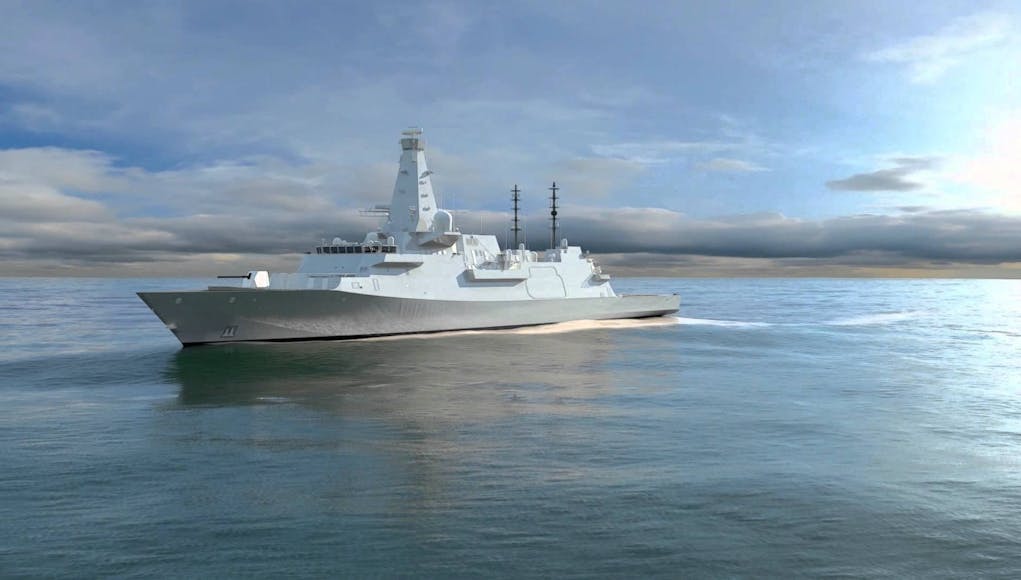

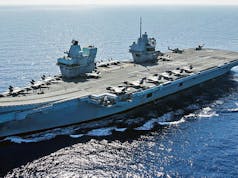

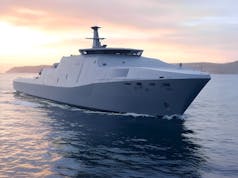
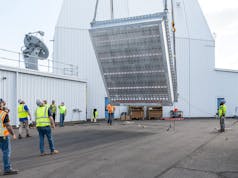
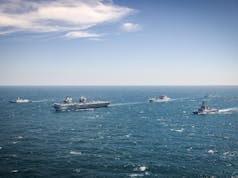





The programme was brought forward in the 2008 budget at the expense of Type 45 destroyers 7 and 8.
I wonder how their Lordships feel about that deal now, and if in future they’ll be more inclined to think that a bird in hand is worth two in the bush.
Couldn’t agree more
2 more T45 would have been more preferable to a load of OPV’s
it seems the at the time silly idea that they would name the vessels after scottish cities to bribe the Scottish vote, might not be so silly. let’s see what boat 2 and 3 are called.
We can’t even crew the six Type 45s we have. If we had eight, three would be tied up in Pompey. Six will have to do until we finish building the Type 26. At that stage hopefully the manpower issue has eased and we can get a class of eight to replace six. As for calling her Glasgow, urr. I would prefer some more imagination in the names. I would prefer more exocotive names, like Furious, Glorious, Courageous, Inferno, Intrepid, Reliant, Nautilus, Neptune, Bellerophon, Hyperion there are plenty to go around.
This. Proper names for warships. The Royal navy has a history of cool names for its ships so lets use them.
I have no doubt that tying the ships to cities has a political motive – cities are full of voters that will generate bad headlines if in the future, anyone tries to take away their namesake. Not that the general population will care much about the ship, but they WILL care if ‘their’ ship is dissed. Imagine if HMS Glasgow was put in reserve while HMS Edinburgh was not!
I served on HMS Glasgow, C21 and from there was drafted to HMS Tyne – and English river. Nothing political about that! There has been an HMS Liverpool, London, Newcastle, just to name a few. I just hope that I am around to check out the new HMS Glasgow. As morse code is now a thing of the past, I will not be looking for the wireless office!
These ships are to be the backbone of the Royal Navy and to protect the carriers. How are they going to do this? If they detect a hostile sub will they attack it with harsh language? What about a hostile ship? Admittedly its a long way from now until these things are active but is that enough time to develop a new anti-ship (and possibly an anti-sub) missiles. And what about Tomahawk? I admit to not being well informed on this subject, perhaps those that are could enlighten me.
Thanks
The first ship won’t need the weapons until 2023 at the earliest. The US will by that point have settled on either LRASM or Tomahawk for Surface to surface Strike. I would imagine we will buy whatever they decide to go for. We will need to buy more Tomahawk for land attack anyway. LRASM will probably have a land attack capability as well so whatever the US build we will buy to cover both surface strike and land attack. As for attacking submarines, we are buying US torpedoes for the P-8 so would assume we will also buy ASROC, it was even mentioned in a ministerial letter last year.
The cost of these ships is eye watering but if they end up as capable and heavily armed as outlined I just wish we could revert to ordering 13. 13 of these vessels would really restore the fighting power of the Royal Navy.
I agree the admiralty has been lied too. They were promised an accelerated type 26 procurement process if they gave up type 45 hulls 7+8 then 12 years later type 26 reduced to just 8 ships and still not even begun yet.
At a price of £1.23 billion each, most observers doubt the RN will get 8. Watch this space but I think 6 based on the promise of if you drop hulls 7+8 you will get large numbers of the new type 31s. History repeating itself= very likely.
With a £10bn black hole in the much vaunted £178bn equipment plan I fear you are right Mr Bell. It will be left to the next Govt to deliver this blow no doubt.
IIRC, the reduced numbers of Type 45’s was also described as less of an issue because the presence of Cooperative Engagement Capability would make a smaller number of ships more effective. Then fast forward a bit, and CEC was deleted from the design to save money!
From March 2019 we will be able to buy 10 Type 26 Frigates a year from the saved EU money of £13.2 Bn a year.
Well I say that. Its mathematics. But no doubt the politicians will fritter that away for no benefit to anyone except the Foreign Aid budget …
Yes at £1.23bn each it’s no surprise there are no export orders. Australia and Canada were interested but they’re not going to buy it now, no matter how good they are.
Is there any way we could use 6 of these £178bn’s to buy 20 Venators and Wildcats and get more sea going RN personnel? And obviously not have them from BAE so we can actually afford them. Start now and spread the cost and build over 10 years.
HOW ABOUT H.M.S. PLYMOUTH FOR NO. 2
Sheffield , Coventry and London would be nice.
Could get a bit busy dock side.
Will you never stop? You clearly have no idea what you are talking about. If we halved the defence budget what would you do with the money? Piss it away on more socialist nonsense no doubt. Try to understand this. A governments first responsibility is to safeguard its citizens and their way of life. Everything else is secondary. There is no point having the best education and welfare systems ever devised if you can’t defend it. The world is not the hippie drum circle you seem to believe it to be and there are always threats to our national security. You clearly have little to no understanding of geo political affairs. What would have happened in WW2 if people like you had your way?
On to the Type 45s, they are not a financial disaster or any kind of disaster. They are in fact world beating AAW platforms and their only problem has been the much publicised engine woes. These will be corrected by project Napier at a cost of under £300 million. So averaged out each type 45 cost around £1.1 billion, hardly astronomical. The ships have a lifespan of approximately 25 years so cost less than £250 million per year of service. Pretty good if you ask me. Obviously that does not include running costs but that doesn’t change the picture that much.
Seriously, why do you visit this site? You clearly have no interest in the subjects discussed. Every post just makes you seem more idiotic. Surley your time could be better spent protesting about transgender animal rights or some other nonsense. I doubt you will pay any attention to this reply but you should. Go look in a mirror and realise that you are a waste of everybody’s time.
The TPA are a long way from being socialist, TPA is primarily a right wing organisation and has no interest in redistributing the money saved from defence cuts through society in general. Similarly any reductions of other budgets at their behest would not result in greater defence spending just fuller TPA wallets.
Other than that you are correct. Beyond the primary security issues TH clearly doesn’t appriciate the important role that the defence industry plays in the wider economy. The truth is that a well planned and executed national (and extensive) RN ship building programme would swell the ecomony significantly. Plentiful skilled work leads to good pay, good pay leads to higher tax reciepts and high domestic spending. Thats one view.
I’ve not heard too many Taxpayers Alliance people wanting a really small navy before, but perhaps TH’s Tax Payers Alliance is a different organisation.
On a tangent but similar I don’t for one moment believe that should our nuclear deterent be scraped the money saved would be funnelled back into the wider defence budget. Either way we should keep Trident but concider developing our own missiles.
It seems to me that a better overall understanding of current naval affairs could be obtained by a reset of warship type nomenclature.
Type 45s should be called AAW cruisers
Type 26 could then be called destroyers (they were being called Global Combat Ships at one point and plainly undertake a much wider range of activities than traditional frigates)
Type 31 are obviously frigates
and OPVs are obviously corvettes!
This would cast the current Royal Navy in a slightly less disappointing light.
Naming these ships after cities is a very good idea, it will increase the RN’s profile with regard to the ships being adopted by those cities, excellent PR.
In the article, it refers to the gun as bae’s 5″/54 calibre. Doesn’t the mod 4 have a 62 calibre (according to Bae’s website)?
HMS Exeter please
There will surely be one named after a Welsh city and NI city now that the lead ship has been named after a Scottish city. I understand why the ships are being named after cities, but I do like the old Leander-class names: Danae, Andromeda, Charybdis, Penelope etc. They are so distinctive, but most people have no clue about those names. Sadly, in this day and age, the average member of the public would probably take more notice if the Type 26s were named after footballers and TV reality show winners. HMS Rooney, HMS Beckham, HMS One Direction, etc. Or how about getting companies to sponsor RN ships…a nice little earner for the MoD. How about HMS Burger King, HMS Vodafone, HMS Tesco, etc. Just kidding, of course–I hope! Seriously, though, I would really like those Leander-class names to make a comeback. Perhaps the Type 31s could be the new Leander-class. They would be about the same size as an old Leander frigate.
8 city names with proud warship history:
Exeter
Gloucester
Newcastle
Southampton
Edinburgh
Cardiff
Glasgow
Antrim
if we revert back to 13 type 26, which i clearly hope we can do if we stop sending money to the bloody EU and wasting it on foreign aid= both those sources equate to £27 billion per year!
If we go back to 13 vessels lets add
HMS London, HMS Swansea, HMS Sunderland, HMS Norwich, HMS Liverpool
I agree with your list
In the article, it refers to the gun as bae’s 5″/54 calibre. Doesn’t the mod 4 have a 62 calibre (according to Bae systems’ website)?